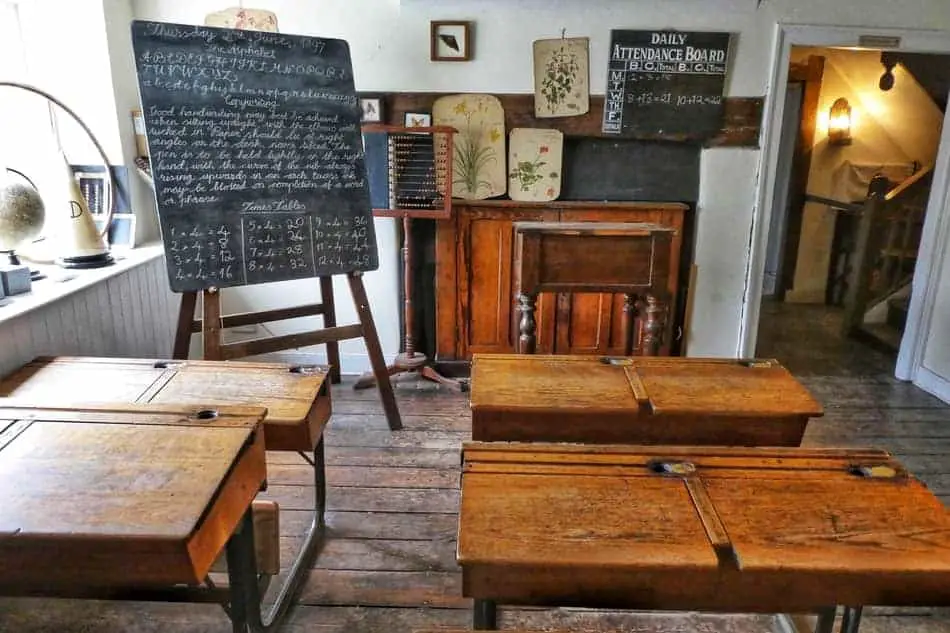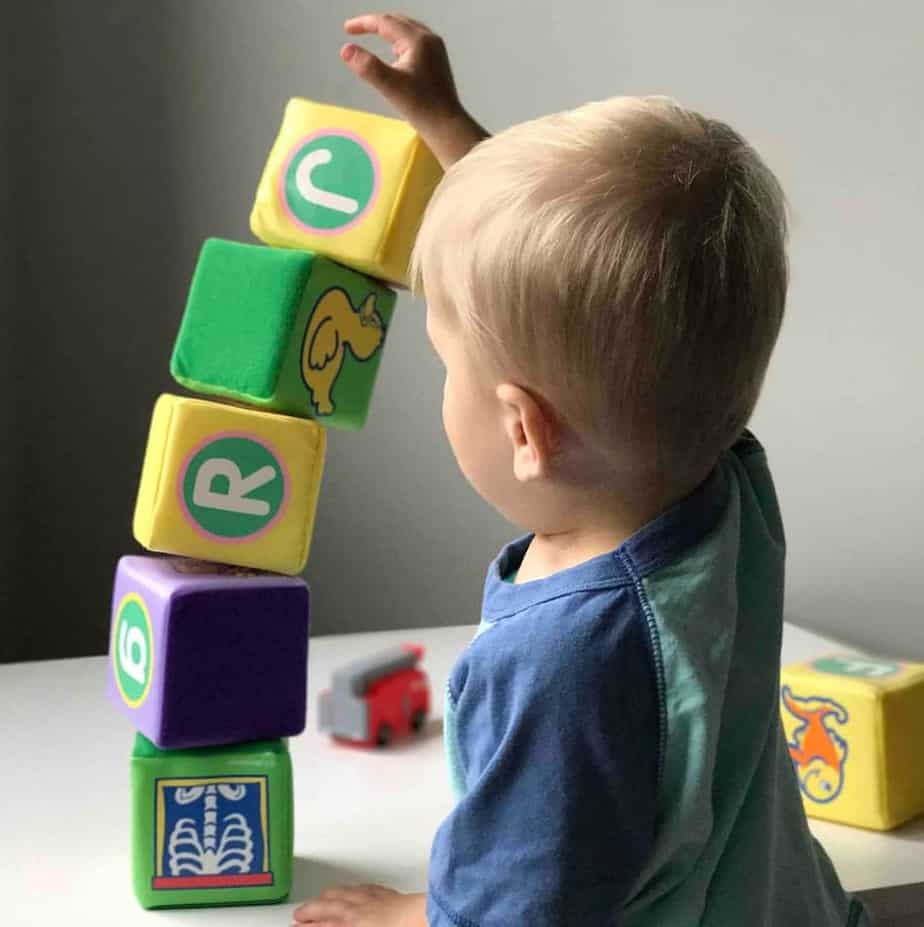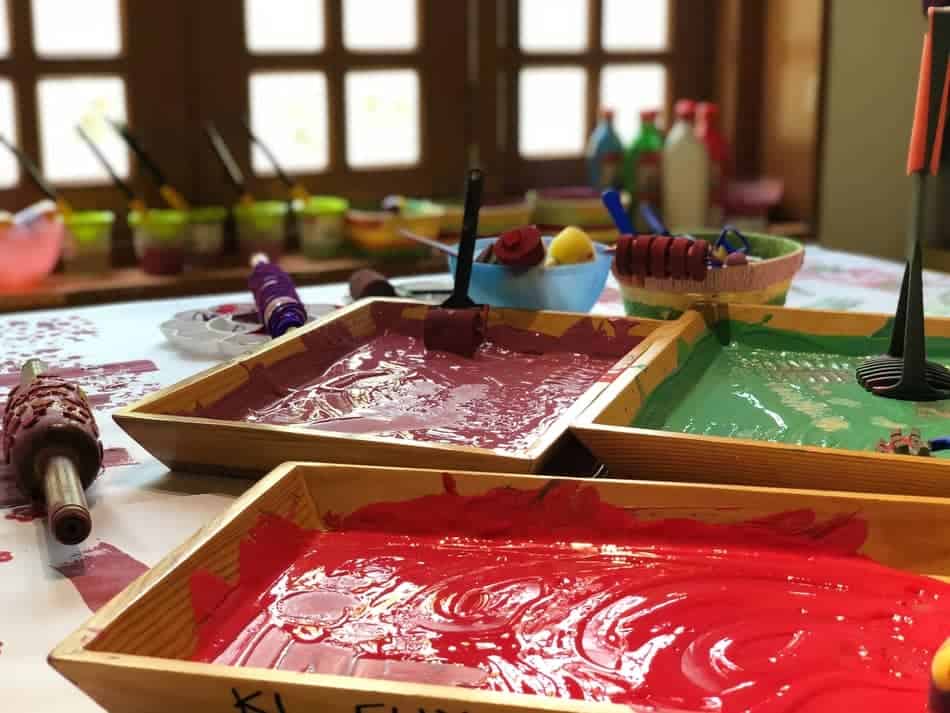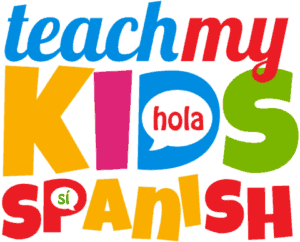
Many parents are becoming teachers with an increase in homeschooling. But without the proper education in education, navigating curriculum, especially a foreign language like Spanish, can be challenging. Having a second language in your child’s repertoire is a wonderful asset, and Spanish is a great choice.
Teaching your child Spanish at home can be difficult. A proper curriculum includes age-appropriate content and meaningful activities to develop a long-lasting understanding of that content.
If you’re like many of the parents finding themselves at home as teachers, you might be feeling a little overwhelmed and frustrated with everything on your plate. It might be tempting to cut Spanish from your homeschooling routine because it’s just too much, but it doesn’t have to be! Just keep reading for the ultimate guide in a Spanish homeschool curriculum.
Your Guide to Setting Up a Classroom at Home for Teaching Spanish
Before we get started on specific age groups and lessons, we need to address your teaching area. Yes, your student(s) is/are learning at home, but they need to have an area or room set up for their learning. This helps with their focus and lets them know that when they are in this area, it is time for learning.
Don’t worry. You can change the location of where you do your learning at any time. Children love to change the scenery, just like any adult, but it is always great to have a spot to do most of your teaching.
If you don’t have an area you can set up specifically for teaching, that is fine. You can always hang up information that will be useful. Here are some things that will help your student:
- A calendar
- Colors
- Days of the Weeks
- Months of the year
- Numbers up to 10
- The Alphabet
When you expose your students to these, they unconsciously absorb the information. This is useful even for the older kids too. And with teaching Spanish, you can add those same topics in Spanish along with their English counterpart. It is a win-win situation!
Types of Learners
Throughout this article, you will find that there are three types of activities listed:
- Auditory
- Kinesthetic
- Visual
These three types of activities are based on the three types of learners. Your student may or may not be one or all of these. It is important to teach your student in many different ways and not stick with one type.
For example, don’t just teach them vocabulary from a book and think that’s enough. The best learning environment provides some movement, visual cues, and listening, especially when learning a language.
Guide to Spanish Homeschooling for Preschool-Aged Learners

Before we can move onto what to teach your children, we need to identify who are preschoolers and how they should be learning. This is important because there are certain topics you just can’t teach a child if they do not have the mental capacity to absorb the info. This leads to memorization without understanding… a topic that deserves an article all to itself.
Preschoolers are usually 4 or 5 years old. So think of their cognitive development when teaching. What do children at this age think about and are interested in? You cannot teach a child theories and abstract concepts at this age. It is important to keep their age in mind when creating activities or practicing their Spanish.
What Topics Should Children Be Learning?
When you are teaching your preschooler Spanish, just think of the concepts they are learning in English. You can teach those same topics in Spanish. At this point, your preschooler will be focusing on speaking, listening, and identifying. They are not ready for reading and conjugating or all that.
Just remember, these are the same topics they are learning in English:
- Numbers
- Greetings
- Alphabet
- Commonly used objects.
- Months
- Seasons
- Days of the week
What Are Some Interesting Activities?
Many of these activities can cross over. You can also change these activities to better fit your student. Each student is different and may learn something better one way more than the other.
Auditory Activities
Immersing your student by either speaking to or listening to Spanish words is a wonderful way for your student to learn. There are many ways you can do this:
- Play children’s’ music.
- Speak to your child.
- Identity objects.
- Watch children’s’ shows.
Play Children’s Music
This is a great way to get your preschooler learning! You can play songs that cover the following topics: the alphabet, body parts, colors, numbers, and more.
The best songs to play are songs they already know in English. They already know the concepts that the song covers, and it will be that much easier for them to identify those words in Spanish.
Speak to Your Child
You can do this even if your first language isn’t Spanish. You can just learn right along with them, and it can be so exciting! Plus, your child(ren) loves when you do things with them. It motivates them to learn.
Start with simple greetings like “hello” or “good evening.” At first, you will need to say these phrases not only in Spanish but in English, so they know what is being said. Your child may mimic the words but may not know the meaning unless you clarify what that meaning is.
Identify Objects
Identifying objects is a great way for your student to learn Spanish. You can easily tell them what they are using or have them ask for the object in Spanish. The more you expose the words to them, the more they will learn it and retain it.
Watch TV Shows
Although this can be considered more visual as a whole than auditory, your student will be listening to the characters speak Spanish.
Most kid’s shows have the option to change the language spoken. You can change it to Spanish and then put on English subtitles. This activity is more for the higher learners as it takes some higher reading skills in English to learn this way.
If you want something a little more simple, “Dora the Explorer” is a great show to expose your child to Spanish. It is fun and interactive, and children love Dora’s enthusiasm.
Remember, television shouldn’t be the only way they learn Spanish, though, and should be limited.
Visual Activities
As said previously, you can use TV shows to help your child learn, but there are many other visual activities they can participate in. Here are some of the following activities:
- Alphabet and Numbers
- Posters
- Index Cards
Alphabet and Numbers
If you have the alphabet or numbers posted somewhere in your teaching area or even in your child’s room, post the Spanish pronunciation of it as well. The great thing about Spanish is that it uses the same alphabet as English but with a little bit of a variation!
With these posted in the room, you can do quick little quizzes, asking your child to identify the numbers in Spanish or pronounce the letter in Spanish. This allows you to give your student a quick lesson without overwhelming them with too much information.
Posters
Posters are a great way to display vocabulary, numbers, colors, or the alphabet. You can find simple posters online, or you and your preschooler can make them together. This will have them learning while working on their fine motor skills.
For useful posters, you can find some here at Amazon.com.
Index Cards
When you see the words “index cards,” you may be thinking of the white cards that you write vocabulary words and quiz yourself, but what I actually mean is the designed index cards that have pictures matching a word or letter.
These index cards are great for preschoolers because it uses images to help your student learn a letter or word. Children don’t start learning how to read until they are 6 or 7, which is cognitively appropriate.
You can find these types of cards at any general store or online. These cards are usually quite inexpensive, and sometimes you can find them in the bargain area at Target. It really depends on the time of year.
Kinesthetic Activities
Kinesthetic activities have to do with your student learning while moving. Think of the song, “Head, Shoulder, Knees, and Toes.” Your child is moving while they learn how to name body parts. These activities are like this.
Songs that require movement while singing Spanish words are a great outlet for your student to expend their energy and learn the words. Find songs that your child enjoys and provide a model to do them. Children love when their parents participate in the activity, and it is a great bonding moment!
This next activity is great for learning specific letters, colors, or shapes. Find a few boxes or baskets. You can label each box a letter, color, or shape in Spanish. Have your child organize objects based on these topics. I would only provide three options because too many can hinder the learning process or overwhelm your student.
You can provide two options if your student is having too much trouble and then increase the options. For example, if you have a box labeled the letter A, your student will put all the objects starting with A in that box. It gets your child moving while learning their Spanish!
What Are Some Great Curriculum Programs?
Not every parent can take over all the teaching when homeschooling. This is understandable. There are many programs out there that you can enroll your student to help supplement some of the Spanish curricula.
- Kids Duolingo
- Sonrisas Spanish
- Spanish Mama
Kids Duolingo
This is a great application to use for your students, especially preschoolers. The application starts off on specific letters and then continues forward based on your child’s success. It is very interactive, which makes it even more attractive.
The only downfall of this application is that it is only available on iOS systems. If you have an Android, tablet, or Windows PC, you can’t download it. You can only use it on Apple products.
The great thing about this application, though it is free!
Sonrisas Spanish
This program has been around for 20 years, so it has some experience with homeschoolers. The great thing about this curriculum is that you can choose how immersed your student will be in their program.
They have three different options you can choose from. The first option will give you activities and lessons tailored to your preschooler. The other two options allow your students access to their online curriculum and resource CDs.
The downfall of this curriculum is that it is quite expensive. The lowest starts at $250 and goes up with each package.
Spanish Mama
This is actually a Spanish teacher that has provided a lot of information on her blog. She provides many of free resources as well as lesson plans. She provides so much information that you can create your own curriculum around the lessons she offers you.
If you don’t have the time to create those lessons or make sure you have the materials for the lesson, she does offer many interactive options on her Teachers Pay Teachers site. There are so many lessons starting in preschool and covering all the way up to high school.
Guide to Spanish Homeschooling for Elementary School-Aged Learners

These groups of students are all at different cognitive levels. A first-grader has completely different learning styles than a fifth-grader. Good news, though, lessons for the preschoolers can be used for older children as well.
As a teacher, you realize that all past information is the foundation for future knowledge. Language is constantly building on top of itself. You can just expand the previous lessons and make them more advanced.
What Topics Should Children Be Learning?
If your student is starting from scratch, you will need to first begin with the topics listed under “preschoolers.” Depending on where your student is at with their recognition of letters, sounds, and words your, you will have to decide where they need to start their lessons.
Here are a few topics starting with what needs to be taught for earlier elementary students to later elementary students:
- Alphabet/Sounds
- Numbers
- Simple Greetings
- Days of the Week
- Months
- Seasons
- Time
- Foods
- Pronouns/nouns
- Conjugating Verbs
These are all topics that your student will learn, especially as they become more advanced. Remember, information just builds on itself.
What Are Some Interesting Activities?
Many of the activities described in the previous sections are perfect for your students, even when they are older.
Auditory Activities
Songs are always a go-to when your student is learning. Songs are fun and easy to remember. There are also a few other activities you can do with your child to help them learn besides songs:
- Speaking in Spanish
- Podcasts
- Audiobooks
Speaking in Spanish is always one of the best routes. It helps build communication skills not
only for your student, but even for yourself and allows your student to practice their Spanish.
Podcasts
Podcasts are a great resource for students to learn about a new language. These are better for older elementary students rather than younger ones. These are also great for parents who need a refresher on their Spanish.
Audiobooks
If you can’t read to your child, you can always have them listen to audiobooks. Try to provide books at their level as well as what they are interested in. You don’t want to introduce your student to higher-level books that can dishearten them. Motivation can be fragile with early elementary students and even older elementary students.
Visual Activities
You can use any of the previous activities from the preschoolers’ section by just modifying them to your student’s level. Here are some other activities you can add to that list:
- Spanish books
- Word Wall
- Labels
There are many other activities, but these are easy to do at home and with minimal resources.
Spanish Books
Find books that your child loves in their first language that is also in Spanish. Children love being able to recognize words in other languages. Their faces light up, and they gain an increasing desire to learn.
Start small. Try not to overwhelm your child with too many books. Early elementary students don’t like to sit for too long.
If there are moving or action words in the book, have them do those actions while saying the word. They are more likely to remember the vocabulary, and it helps with all that energy.
Word Wall
These are popular in classrooms of all ages. These are better for older elementary students or students that have started reading, but younger children learn from a word wall too. You can modify these in so many ways! These can be complicated with parts of speech, definitions, pictures, and more! Or you can make it simple with the word and pictures to match.
The best place to put a word wall is in the teaching area. With early elementary, don’t put too many words on the wall. Sometimes with too many decorations or words can cause more of a distraction instead of an innovative learning environment.
Labels
Labels might be a little more tedious than other activities, but your child will have so much fun helping you with those labels. Put them on objects that your student uses often so they will be exposed through repetition. You can even mark food products to help your child and remind her to use those Spanish words.
Kinesthetic Activities
There are many ways you can put movement into learning. Whether it is songs or a favorite physical activity, you can just modify your lesson to include those more frequently. For example, your child may love to jump rope. Have them spout off the alphabet or numbers in Spanish as they jump over the rope.
What Are Some Great Curriculum Programs?
There are so many programs out there, but here are a few that are great for elementary students.
Foreign Languages For Kids
This program is a great option because it is subscription-based. For $15 a month, your student will be fully immersed in Spanish through daily life activities relevant to them. If you don’t feel it is the best fit for you, you can end your subscription.
Spanish Mama
This one deserves a repeat because there are so many lessons and activities that this teacher has created and provided. This is especially great because there are so many free resources.
Guide to Spanish Homeschooling for Middle School Aged Learners

This age group can be a little difficult. They are at the age where they are finding their independence and trying to figure out who they are. Then you have to consider their attention. With all the technology available to them, these students can get distracted and be bored easily.
Don’t worry. Even with these obstacles, there are so many fun new programs and resources at your disposal that you can modify to your child’s learning style and interests.
What Topics Should Children Be Learning?
This all depends on where your student is starting in their curriculum. Here are some things you to consider when determining where to begin:
- How much Spanish does my student already know?
- Where are they at in the curriculum?
Once you have that figured out, you can begin teaching. If your student is starting from scratch, refer to the “preschool” and “elementary” topics that were listed earlier in this article. You can change those lessons to better fit your student’s needs and pace.
If your student has already learned the previous topics, they are quite advanced in Spanish. The biggest areas for these students to focus on is:
- Learning new vocabulary words
- Speaking
- Writing
- Listening
The best thing at this point is to continue practicing their Spanish skills while implementing more words and creating complex sentences.
What Are Some Interesting Activities?
Students at this age like to use more technology and “game” or “competitive” activities. There are plenty out there that you can easily try out.
Auditory Activities
Songs will always be the first. Figure out the genre your child enjoys and have them listen and learn new songs in Spanish. You can even make this into a visual activity by playing a song to them and having them translate the words.
Audiobooks and podcasts will always be useful and even more so with preteens. Have them listen to conversations in Spanish and provide a translation into their first language. You can even make it competitive if you have siblings to see who can have the most accurate translation.
Visual Activities
Of course, books, posters, and television are all great resources for visual activities, but video or computer games are great as well, and especially for your age.
Video Games
Video games are increasingly popular with this age group. The great thing about video games, you can change the settings to Spanish. This includes games like Halo 3 or Tomb Raider. Both games provide an option for new Spanish language learners! They get to play video games they love and learn Spanish simultaneously.
Computer Games
There are many competitive and non-competitive games online for free. Spanish-Games.net has a lot of word games if your child is really into puzzles. But there are other options– memory matching, shopping, skateboarding, and so much more!
Kinesthetic Activities
Many of the activities said before are great for middle school students. If your student likes basketball, play basketball while you review basketball terminology in Spanish with them. The same goes for any other physical activity your student enjoys.
Another simple activity you can do in a few minutes, you can create an action to represent a new vocabulary word. Say the word is “beber” or to drink. You attach the action of drinking to the word as you say the word and its definition aloud.
Do this three times, so the word, definition, and action sticks in your brain. To make it competitive, do this with several vocab words and then see how many your student can remember.
Roleplay or create a skit for your student to practice their skills. You can have them order food or pretend to go shopping and speak Spanish to find their needs. This may be a little awkward at first, but it provides a great outlet to practice this new language.
What Are Some Great Curriculum Programs?
Many of the programs that have been listed before can be used for middle school students, but some that are more tailored to this age group is:
Power Glide
Power Glide can be used for elementary, middle school, and high school students. It has more activities than Rosetta Stone and provides more interaction than other programs. It is also a little bit cheaper: $100 for two semesters.
Visual Link
This program is better for students who work independently. It also focuses more on conversational Spanish than formal written Spanish. This is great for students who are better at speaking than writing and reading.
Great Resources for Homeschooling Parents
Many of the previous curriculum programs are useful if you need them, but not every parent wants a program. Sometimes you just need a few resources for lesson plan ideas. There are plenty of places that provide free tools, lessons, and activities for your child. Here are a few:
| Free | Paid |
| Teacher Pay Teachers (Sometimes) | Teacher Pay Teachers |
| Duolingo (Up to a Point) | Rosetta Stone |
| Coursera | Spanish for Kids |
| Pinterest (Has a lot of activities for different age groups) | Music Apps SubscriptionsSpotifyiHeartRadio |
Final Thoughts
Just remember that each student is different. With homeschooling, your student can get an individualized curriculum that best suits them. As a parent, you know your student best and know what lessons would benefit them the most.
